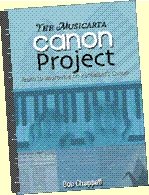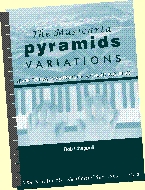Twelve-bar Harmony
It is not necessary to work methodically through this theory module in order to learn and enjoy playing the many boogie and twelve-bar riffs in the Musicarta Twelve-bar Piano Styles workbook.
Elements of music theory relevant to twelve-bar music (and particular pieces) are scattered throughout the study modules and can be successfully picked up along the way, but learners might also find having all the information in one place useful for reference and for consolidating their knowledge.
It is also the case that many unschooled creative musicians can improvise and compose at the keyboard precisely because they understand, implicitly or explicitly, the music theory which underpins their particular musical genre.
This is because music theory is ‘creative’ to a unique degree. In a musician, knowledge of music harmony actually generates music, or the possibility of music. It also greater enhances the ability to play by ear, since it effectively predicts the chords most likely to be found together and provides the education for the ‘educated guesswork’ the play-by-ear musician seems almost magically to enjoy.
The major scale
Demonstration
The piano keyboard provides a ready-made major scale - the white keys from C to C.

You build ‘play one, miss one, play one, miss one, play one’ chords, using these notes, on each scale degree, to get the chords of the key of C major.
Of the seven different chords you can make, you find major chords on the first, fourth and fifth scales degrees (steps) – chords I, IV and V. These are the first three of the four ‘Key Chords’.

You can play music with the three chords of this simple type:

But, every triad comes in three inversions, with a different note at the top
…and moving from one chord to the closest inversion of the next chord makes better-sounding music:

SO… Key Chords teaches you how to move between closest inversions of the three major chords (I, IV and V) – and eventually the fourth chord (vi – Six) too.
Key Chords breaks this task up into pairs, and the first pair is I and IV – C and F major chords in all-white-key C major.
The first pair: I and IV – C and F chords
Here are the chord tones of the C and F chords indicated on keboards and played ffor you.


Your first pair of closest inversions is this (you play the notes joined by the lines):
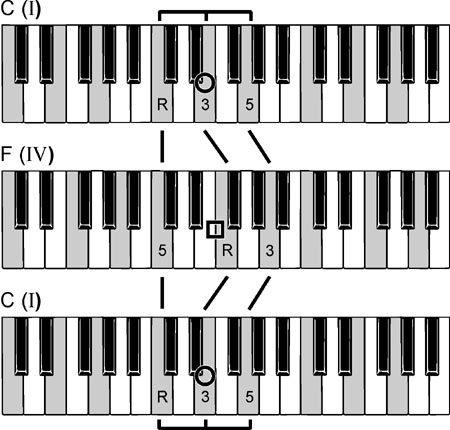
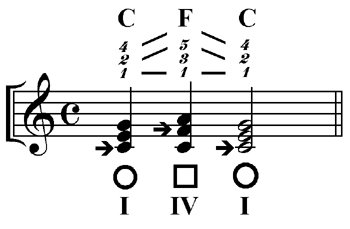
The remaining pairs
(NB: The following is just a sketch of the rest of the module - the Key Chords workbook doesn't dash through it like this!)
There are two other sets of closest inversions to find:
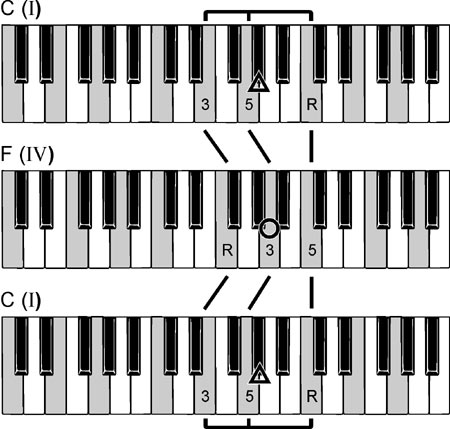 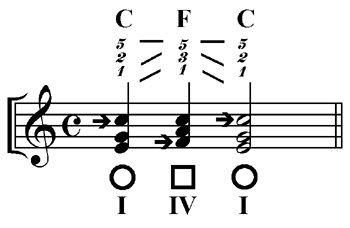 |
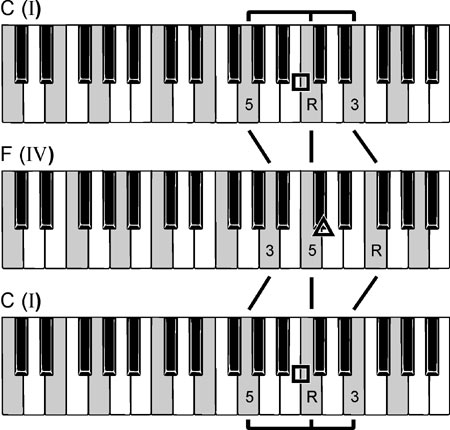 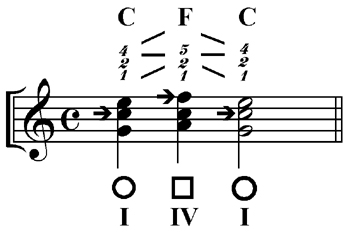 |
You now have the full set of three closest-inversion pairs:

The first module riff
Now all you need is a bit of foot-tapping syncopation, and you've got a working riff!
In closing...
That concludes this first Key Chords demonstration lesson, which shows you how the home study download coaches you to real keyboard mastery of the chords you need to play popular music.
Stay posted - lots more to come in this revised series of web pages!
|
OUT NOW! |
THE MUSICARTA BEAT & RHYTHM WORKBOOK At last! An effective approach to keyboard rhythm & syncopation skills. Learn more! |
ONLY $24.95! |
Musicarta
|
The MusicartaA methodical approach to keyboard syncopation for
|
PUBLICATIONS
exciting keyboard
creativity courses
CHORDS 101
WORKBOOK

~HANON~
video course

Musicarta
Patreon
PENTATONICS
WORKBOOK
video course

Creative Keyboard
video course

BEAT AND RHYTHM
WORKBOOK
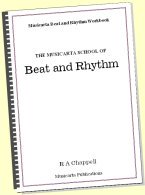
- Volume 1 -

12-BAR PIANO
STYLES WORKBOOK
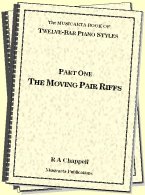
MUSICARTA MODES
WORKBOOK
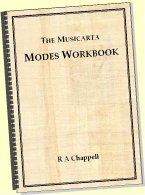
PIANO STYLE
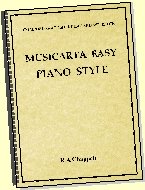
CANON PROJECT
video course
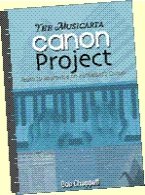
VARIATIONS
video course

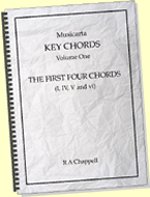
- Piano Solo -
video course
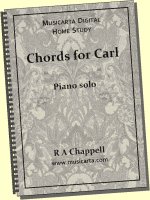
- Piano Solo -


THERead all |
YouTube playlists
PUBLICATIONS Exciting digital home study packs!
KEY CHORDS VOL.1

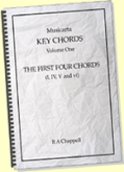





 THE LOGO
THE LOGO

